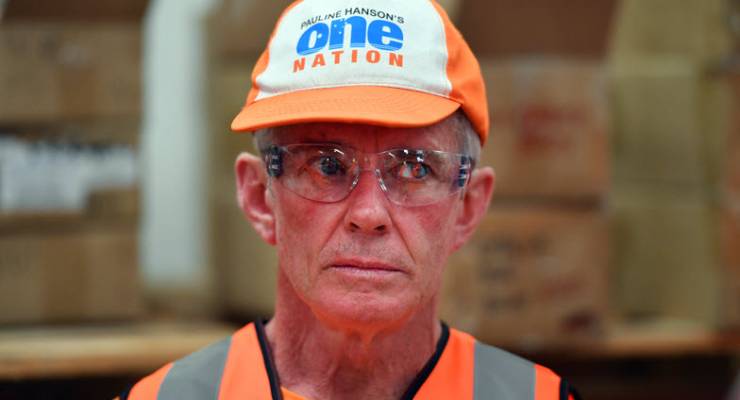
For all its baffling complexity, tomorrow’s state election in Queensland can be well understood as a war on three fronts: the urban south-east, the regions, and the behind-the-lines guerrilla campaign waged by One Nation.
The first of these appears to be turning, perhaps decisively, in favour of Labor, which has gained traction with a campaign based around the “cuts and chaos” threatened by a governing Liberal-National Party and One Nation alliance.
The dynamic is quite different in regional Queensland, where economic stagnation and an ill-advised change to the electoral rules (more on that shortly) could potentially give the LNP the gains needed to tip the balance the other way.
But it’s the One Nation factor that has made the campaign a focus of national attention, as poll ratings in the high teens suggested the party had a very strong chance of gaining the balance of power.
Opposition Leader Tim Nicholls has struggled for clear air amid questions as to how he would proceed in that event, to which he has failed to formulate a convincing response.
However, a late poll by Galaxy poll for the Courier-Mail suggests One Nation may have finally gone off the boil, dropping from 18% to 12% over the past three weeks.
Since One Nation’s potential return of seats is enormously sensitive to even modest changes in overall support, this suggests it is in for a disappointing night (expect it to discover an enthusiasm for proportional representation if so, just as UKIP has done in Britain).
One Nation is certainly strong enough in rural areas to pose a threat where the LNP has retiring sitting members (Lockyer and Callide), and it has a formidable base of support in and around the struggling cities of the state’s north.
However, talk of victories in working class seats on the fringes of Brisbane has fallen by the wayside — suggesting, among other things, that Ipswich voters are unlikely to avail themselves of the services of Malcolm Roberts.
This will not stop One Nation voters having an important bearing on the result, thanks to the Palaszczuk government’s tactical own goal in abolishing optional preferential voting.
If voters were still required to number only as many boxes as they pleased, around half of this vote would drop out of a Labor-versus-LNP preference count.
Now each vote will stay to the bitter end, to the advantage of the LNP — although exactly how much of an advantage is one of the election’s many imponderables.
One Nation’s wrecking-ball strategy of directing preferences against all sitting members hits Labor harder than the LNP, as there are up to seven regional seats where strong One Nation support coincides with small Labor margins.
But if such losses can be contained, potential gains for Labor in Brisbane and on the Gold Coast offer a clear path to majority government, which it is hard to see happening for the LNP.
The LNP needs a net gain of five seats for a majority in a parliament newly enlarged from 89 to 93, and will need an extra gain from Labor for every seat lost to One Nation.
However, it would only take a net gain of three to yield an acceptable second best option of governing with support from Katter’s Australian Party, whose two members are expected to be re-elected.
The accumulated evidence of opinion polls suggests the odds are against them – but with everything depending on a populist party and its largely disengaged support base, this is exactly the sort of election that has, in recent years, led pollsters around the world astray.








If the Limited News Party wins, how soon before they start crossing the separation of powers to stack the courts with their pets, to adjudicate in their future favour – like they did last time?
One Nation has more shonks, dills and trough feeders than even the LNP, so why would anyone vote for them? Anyone who actually studied the unlovely Pauline knows that she is only in it for herself, as most of her former senior cohorts have found out and left her alone.
ooh, ooh!, I know that one!
Coz they are braindead banana benders.
We can safely predict one thing ie: if ‘x’ One Nation candidates win seats at this election, when the next one comes around in 2021 there will be far fewer than ‘x’.
A percentage of voters are so disenchanted with politics they will play risk with One Nation, an underdog alternative – hope springs eternal. After a term of the usual One Nation disarray, embarrassments, scandals & shenanigans their MPs will effectively self-cannibalise.
It will be diverting to sit back & observe James Ashby attempting the equivalent of herding cats.
Look at the number of ex or dis-endorsed LNP Candidates. One Nation seems to be made up of people who couldn’t hope to ever be pre-selected for a Major Party, and the only reason they get votes is by slapping that xenophobic redhead’s face all over their campaign material.
I don’t agree they attract those that are disassociated. It attracts those who want the freedom to be racist in a crowd.
With Malcolm Roberts having been found to have had dual citizenshipby the high court should not his party now be called two nations
Unless X is zero, they can’t have a negative number of seats
i would love to contribute to cricky and poll bludger but I am a pensioner and cannot afford anything for these. but I do value your serve. thank you for being here